Wellington Caves
Useful Information
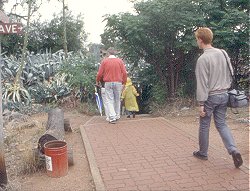
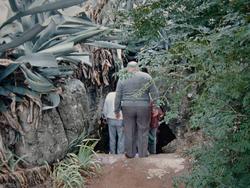
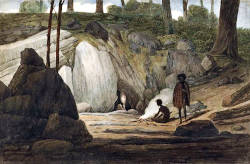
| Location: |
Caves Rd, Mitchell Highway, Wellington NSW 2820.
A32 Mitchell Highway, 9 km South of Wellington. (-32.620974, 148.938636) |
| Open: |
All year daily 9-16:30. Closed on 25-DEC. [2023] |
| Fee: |
Cathedral Cave:
Adults AUD 29.50, Children (4-16) AUD 14.50, Children (0-3) free, Students AUD 27, Seniors AUD 27. Gaden Cave: Adults AUD 29.50, Children (4-16) AUD 14.50, Children (0-3) free, Students AUD 27, Seniors AUD 27. [2023] |
| Classification: |
 Karst Cave Karst Cave
 Caves With The Tallest Stalagmite Caves With The Tallest Stalagmite
|
| Light: |
 Incandescent Incandescent
|
| Dimension: | |
| Guided tours: |
Cathedral Cave:
D=60 min, Min=2, St=300. Gaden Cave: D=60 min, Min=2, Max=12, St=240. V=50,000/a [2005] V=42,000/a [2000] V=1,500/a [1888] |
| Photography: | allowed |
| Accessibility: | no |
| Bibliography: |
R.A.L. Osborne (1998):
Karst Geology of Wellington Caves: a review,
Helictite 37(1):3-12 Joan Starr and Doug McMillan: The Wellington Caves , Kent Henderson: The Wellington Caves and Abercrombie, detailed description of all the cave tours for both cave complexes. Greg P Plummer (2004): A History of Wellington, NSW and the Discovery of Wellington Caves, NSW., Journal of The Sydney Speleological Society, Vol 48 (2) 39-45. Includes a 3 page bibliography. Lyndall Dawson, M. L. Augee (1997): The late Quaternary sediments and fossils vertebrate fauna from Cathedral Cave, Wellington Cave, New South Wales, Proceedings of the Linnean Society of New South Wales, Volume 117, pp 51-78. online |
| Address: |
Wellington Caves, Caves Rd, Mitchell Highway, Wellington NSW 2820, Tel: +61-2-6840-6480.
E-mail: |
| As far as we know this information was accurate when it was published (see years in brackets), but may have changed since then. Please check rates and details directly with the companies in question if you need more recent info. |
|
History
| 1826 | painting by Augustus Earle titled Mosman’s Cave shows the entrance of Cathedral Cave. |
| 1828 | first recorded in the diary of Hamilton Hume. |
| 1830 | fossil bones discovered by the colonist George Rankin. |
| 1830s | fossils examined by Charles Darwin. |
| 1884 | caves declared a natural reserve. |
| 1885 | Cathedral Cave opened as a show cave, appointment of the first caretaker, James Sibbald. |
| 1888 | the caves were visited by 1500 peoples a year. |
| 1902 | Gaden Cave discovered. |
| 1909 | Gaden Cave opened as a show cave. |
| 1913-1918 | phosphate mining has destroyed huge amounts of the bones. |
| 1996 | Phosphate Mine reconstructed and reopened for tours. |
Description
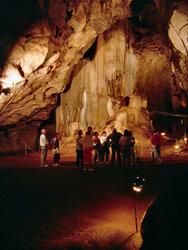
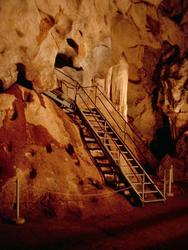
Wellington Caves are really dry caves as they are located west of the dividing range. Only occasional rains are not enough to explain the existence of those caves, so they were formed long ago, when Australia was far more south and the climate was much wetter. The cave has nice river passages, which are the last remains of a strong cave river. Today the floor is covered with dry earth.
The regular tourist cave tours show a cave, which is called Cathedral Cave. The last chamber of the tour contains the Altar Rock, a 15 m high stalagmite with 32 m circumference at the bottom. It is told to be the largest stalagmite in the world. From the geological or speleological viewpoint, the cave with its multiple flow forms, is very interesting. Despite the single huge pillar there are fortunately not many speleothems covering the scallops of the wall.
The second cave, open for the public is Gaden Cave.
This cave is famous for its unusual and beautiful
 cave coral.
cave coral.
The third show cave, open for the public, is the old Phosphate Mine. This cave is home to numerous bats, among them a threatened species called bent-wing bat. As a result there were enormous amounts of bat guano, which was once mined as fertilizer, hence the name. A troglobiontic crab living in the caves is considered to be a living fossil. The phosphate mining removed 6,000 tons of rock and guano. After the mining the passages were mostly backfilled or collapsed, so the cave was forgotten for almost 80 years. The cave was reopened and developed, and opened as a third show cave in 1996.
Rather new is the rule that hard hats are supplied and have to be worn on all tours. Even the pictures on their own website still show visitors without. Such a rule obviously makes no sense, there are no low passages and as it is a natural cave and not a mine there is very little danger of a rockfall. They allow to bring your own if preferred, even if it is a biking helmet.
In the Bone Cave, which is only open to scientists, millions of years old fossils have been found. It was discovered in 1830 by the colonist George Rankin, who accidentally fell into the entrance of a cave. There he found piles of bones, many of them were of enormous size and could not be matched with any known Australian animal. In the same year he and Surveyor General Sir Thomas Mitchell collected more than 1,000 specimens. Mitchell sent them to the Geological Society of London in 1831. In 1866 and 1869 the Curator of the Australian Museum, Gerard Krefft, conducted two separate extensive excavations.
The age of the bones ranges from approximately 30,000 years up to four million years. The extinct species found here are for example marsupial lions (Thylacoleo), the Diprotodon, giant kangaroos, huge seven metre-long carnivorous goanna, other reptiles, and birds. The Diprotodon was a herbivorous marsupial and its teeth were well adapted for grazing. It roamed the area during the Pleistocene period. At the entrance of the cave is a sculpture which tries to show its original look. Looks a bit like the big rabbit from Walt Disney’s Alice in Wonderland, just without watch and hat. In 2000, right before the Olympic Games, the Australian Museum in Sydney opened a major exhibition with bones from Wellington. The exhibition toured several natural museums in Australia.
The reserve contains numerous other caves. With recent discoveries by the members of the Sydney University Speleology Club their number is 26. Two of them are water filled: River Cave and Water Cave. The SUSS also explored the water filled caves by cave diving.
 Search Google for "Wellington Caves"
Search Google for "Wellington Caves" Google Earth Placemark
Google Earth Placemark Wellington Caves - Wikipedia (visited: 26-APR-2023)
Wellington Caves - Wikipedia (visited: 26-APR-2023) Wellington Caves, official website (visited: 26-APR-2023)
Wellington Caves, official website (visited: 26-APR-2023) Index
Index Topics
Topics Hierarchical
Hierarchical Countries
Countries Maps
Maps Search
Search